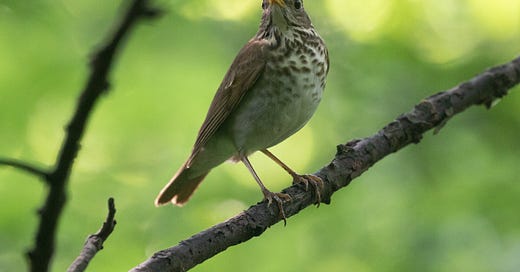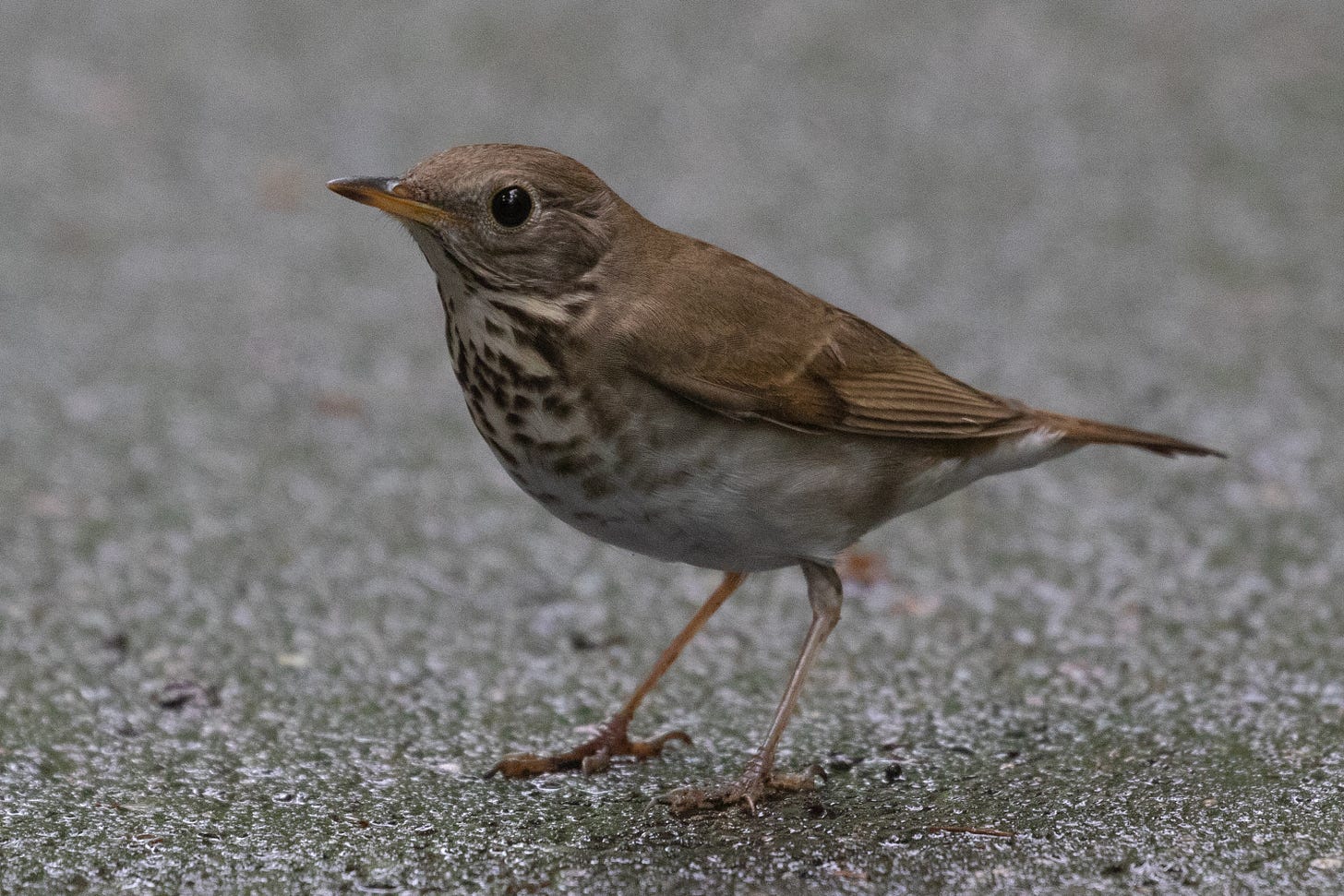it doesn’t take long before northeastern birders learn about the bicknell’s thrush. it is, according to birds of the world, “one of the most reclusive breeding birds in north america. it is also among the most rare and, possibly, most threatened.” birders generally desire to see such a bird.
as birds of the world implies, seeing the bird is not easy. the bicknell’s thrush is a member of the already challenging-to-identify catharus genus of nightingale-thrushes. and even worse, it looks nearly identical to the far more common gray-cheeked thrush, visually discernible only when you’re holding it in your hand and measuring it with a ruler and scale. sometimes that’s not enough, either.
but with luck, skill, and a frustrating amount of patience, you can regularly encounter and identify the bicknell’s thrush in america’s largest city.
a bit about the bird: the bicknell’s thrush is most famous for its range-restricted, picturesque, and surprising breeding habitat. this bird specializes in spruce-fir forests on mountaintops in new york and northern new england, plus coastal forests in nova scotia and quebec. it favors forests with patches of dead trees, particularly places where wind, snowfall, and/or forestry activity have knocked trees over. naturalist eugene bicknell first noted the bird atop slide mountain, the tallest of new york’s catskill mountains, in 1881, and the next year robert ridgway named the bird bicknell’s thrush in his honor. ridgway categorized it as a subspecies of the more common gray-cheeked thrush.
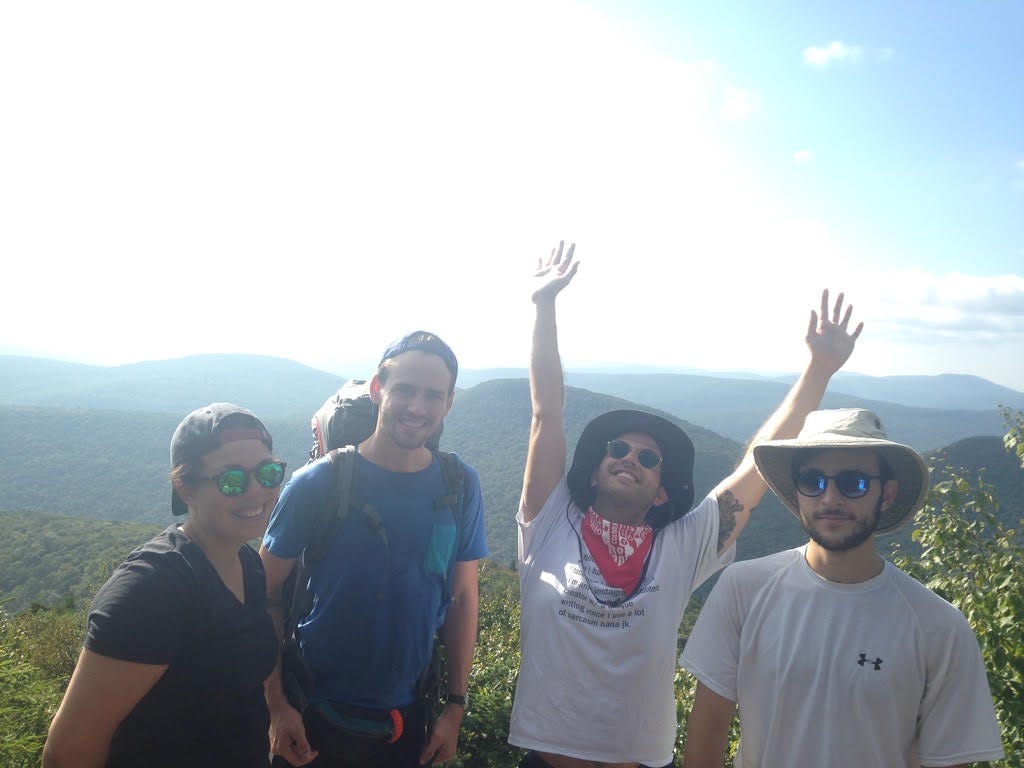
then, in 1993, ornithologist henri ouellet published a paper declaring that the bird was a separate species from the gray-cheeked thrush based on differences in summer and winter habitat, appearance, and song. bill evans followed with a paper coming to similar conclusions in 1994. thus, the american ornithologists union declared the thrush a separate species in 1995. some took issue and don’t think the papers demonstrate definitive differences, but a more recent paper led by author alyssa fitzgerald used genetic methods to provide more evidence that the two really do represent unique species.
today, bicknell’s thrushes are rare and threatened because of their restricted breeding range. there are only ~100,000 of them in the world. and with climate change and deforestation, they may lose most of their breeding habitat by the end of the century.
for now, birders can see these birds in new york city, since the city sits between the bird’s caribbean wintering grounds and its northeastern breeding grounds, with some birds stopping by during migration. but the city attracts far more of the bicknell’s doppelganger, the gray-cheeked thrush, and telling them apart is really hard. some very passionate and/or very experienced birders will tell you they can pick out the bicknells by sight and vibes alone. perhaps they can for certain clear-cut individuals. but they are probably wrong a lot more often than they think or will admit, and the real experienced birders generally know when to say “i don’t know.”
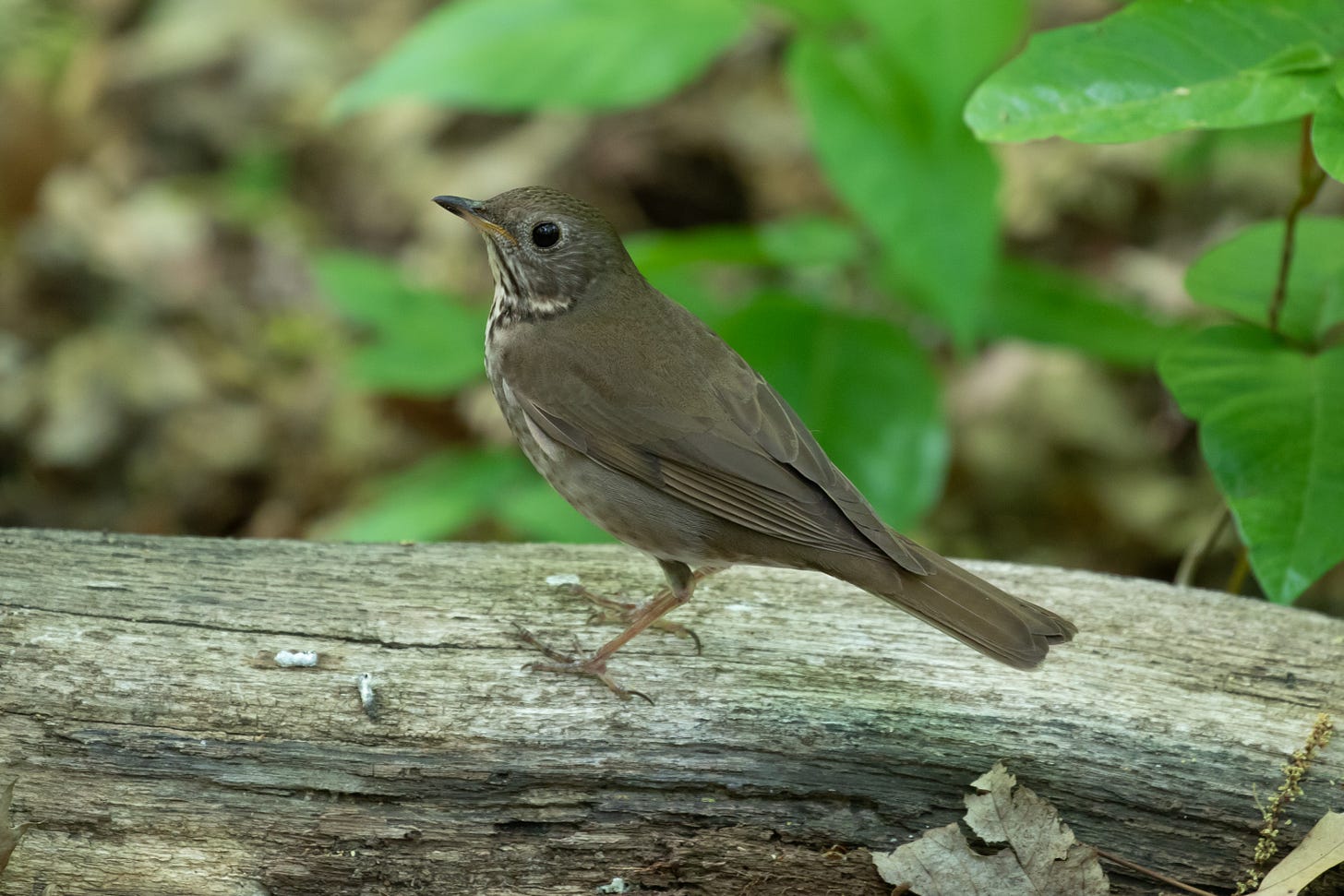
visual differences between the birds are a game of averages. bicknell’s thrushes average smaller with shorter wings, while gray-cheekeds average bigger with longer, more pointed wings. there are overlaps in these measurements, though, plus size is hard to judge in the field. the most talked-about difference is color. bicknell’s thrushes tend to be redder than gray-cheeked thrushes. gray-cheeked thrushes are gray-brown to olive colored. but there’s overlap, plus the gray-cheeked thrushes living in newfoundland and around the mouth of the st. lawrence river are red, too—about as red as any bicknell’s thrush. bicknell’s tends to have more and brighter yellow in its beak—but some gray-cheeked thrushes can have really yellow beaks, too.
what about sound cues? well, both birds give a descending “speeer!” call, and bicknell’s thrush’s is higher-pitched on average. but sit around with a calling bicknell’s and a gray cheeked and there will overlap in pitch. thankfully, you do have one actually-useful tool in your arsenal: their song. both sing an electronic-sounding jumble of notes. gray-cheeked thrush songs end on a note that’s lower-pitched than the preceeding notes, while bicknell’s thrush songs end on a note that’s higher-pitched than the preceeding notes. note that both birds might sing only part of their song, adding further confusion. you’ll want to hear as much of the bird singing as you can.

that leads to the tried-and-true method for finding bicknell’s thrushes in new york city: patience. both species begin showing up around the second week of may, and continue migrating through to the end of the month. during that period, walk through appropriate habitat—shady areas with lots of leaf litter—and look for good candidates, what we call “gray cheeked-type thrushes.” these will be brown birds with a spotted belly and grayish cheeks. you’ll have to rule out the non-thrush brown-spotted ground birds, plus the more common thrushes like swainson’s thrushes, which have buff-colored eye rings, hermit thrushes, who have red tails that contrast from their brown backs, veeries, which are much more red with less spotting on their chest, and wood thrushes, with red backs that strongly contrast with their dark belly spots.
once you have a gray-cheeked-type bird in front of you, look closely. it’s worth appreciating, regardless; gray-cheekeds are migratory marvels, many traveling all the way from south america to breed in the arctic tundra. if the bird is totally cool-toned with more of a gray-brown color, you may want to continue your search elsewhere, since it’s more likely a gray-cheeked. if it’s reddish and appears to have a very yellow bill, it’s worth digging further. if you can’t tell if it’s reddish, it’s helpful to wait until it hops into the sun or into an area with more light. if you still can’t tell, up to you whether you’d like to gamble your time on the bird.
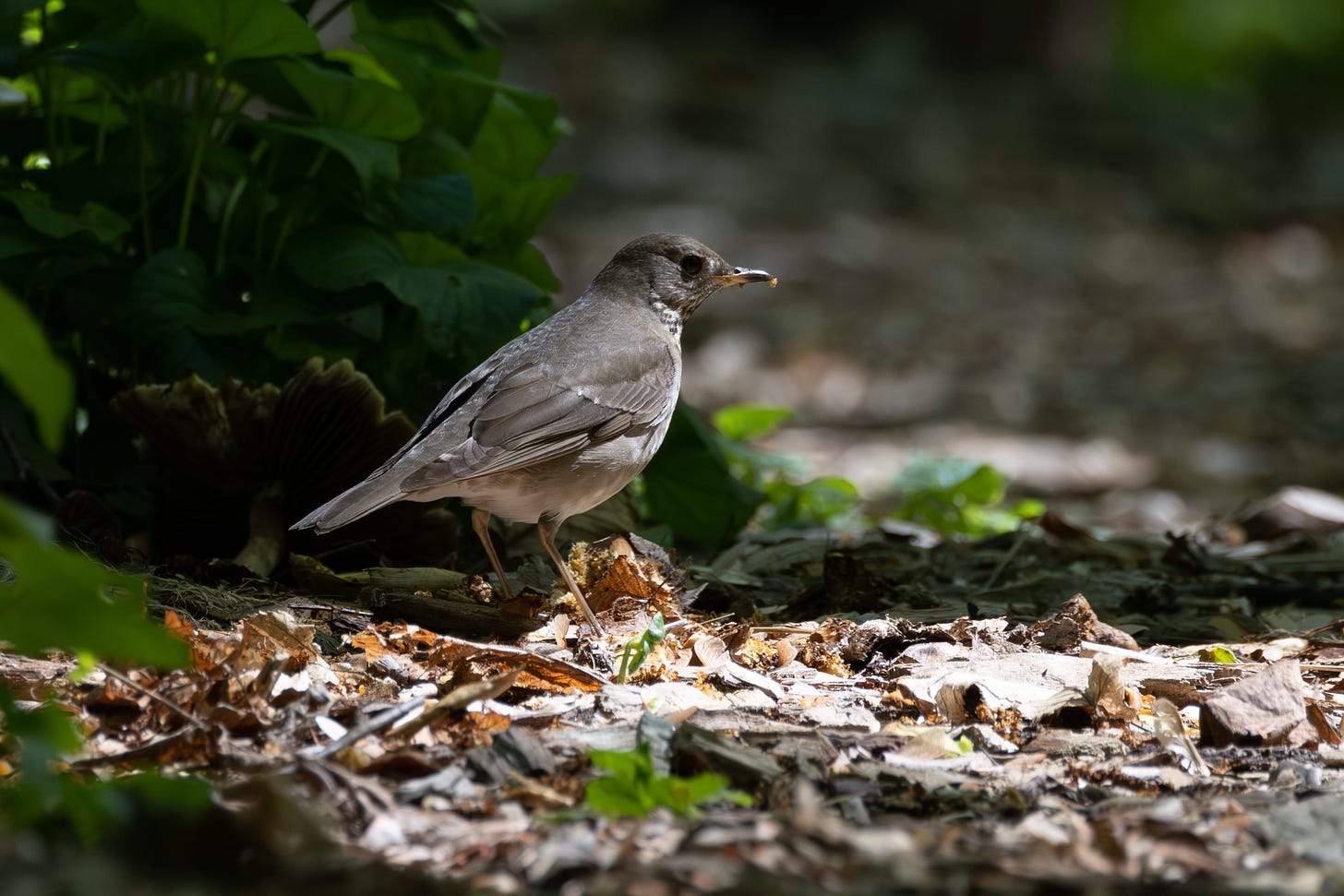
once you have a good candidate, turn on your phone’s voice recorder and wait. sit someplace nearby and watch the bird hop around, digging in the leaves for insects. giggle at the antics of this adorable pot-bellied creature as it grows accustomed to your presence and ventures nearby. i’ve twice had brooklyn bicknells’ thrushes be strangely confiding, feeding at my feet. you’ll get to know the bird so well that you might forget why you were there in the first place.
hopefully, after seconds, minutes, hours, or maybe not at all, you’ll hear the bird vocalize. maybe you’ll hear the bird vocalize before you see it at all. hopefully that vocalization will include the song, and hopefully that song is loud enough that you and your phone can hear it over the city noise—sometimes the birds whisper the song under their breath. and maybe that song will be the song of the rare bicknell’s thrush. i’ll add that all four of the bicknell’s thrushes i’ve seen in brooklyn have been singing on warm days, three out of the four times at midday. maybe that’s useful intel, or maybe it’s a coincidence.
this isn’t a sisyphean task—brooklyn birders have documented four bicknell’s thrushes already this year, and i think it’s a reasonable expectation that obsessive new york city birders will be able to hear a bicknell’s thrush in the city every year. but it definitely can be frustrating and a big time suck during a time where there are a lot of other birds to be looking at.
if all that sounds like a big waste of your time, you can go hike up to their breeding habitat atop slide mountain in the catskills. you can also drive up to bicknell’s thrush habitat on whiteface mountain in the adirondacks, where they’re easy to see and hear. but exploring the wilderness far outside the city’s borders is not what this newsletter is about!
postscript
i am so busy! i have a book draft due 7/31 and there’s so much more i want to write, all in the middle of peak birdwatching season. but i am feeling pretty good about this book thing at the moment. i’m not hosting a lot of walks this season. but you can catch me at two more walks:
june 4 from 9 to 10:30am at marine park, meet on the corner of burnett street and avenue u
june 5 from 5:30-7:00 PM at prospect park, meet at the grand army plaza arch
thanks for reading. here’s a bee. just kidding, it’s actually a fly.

